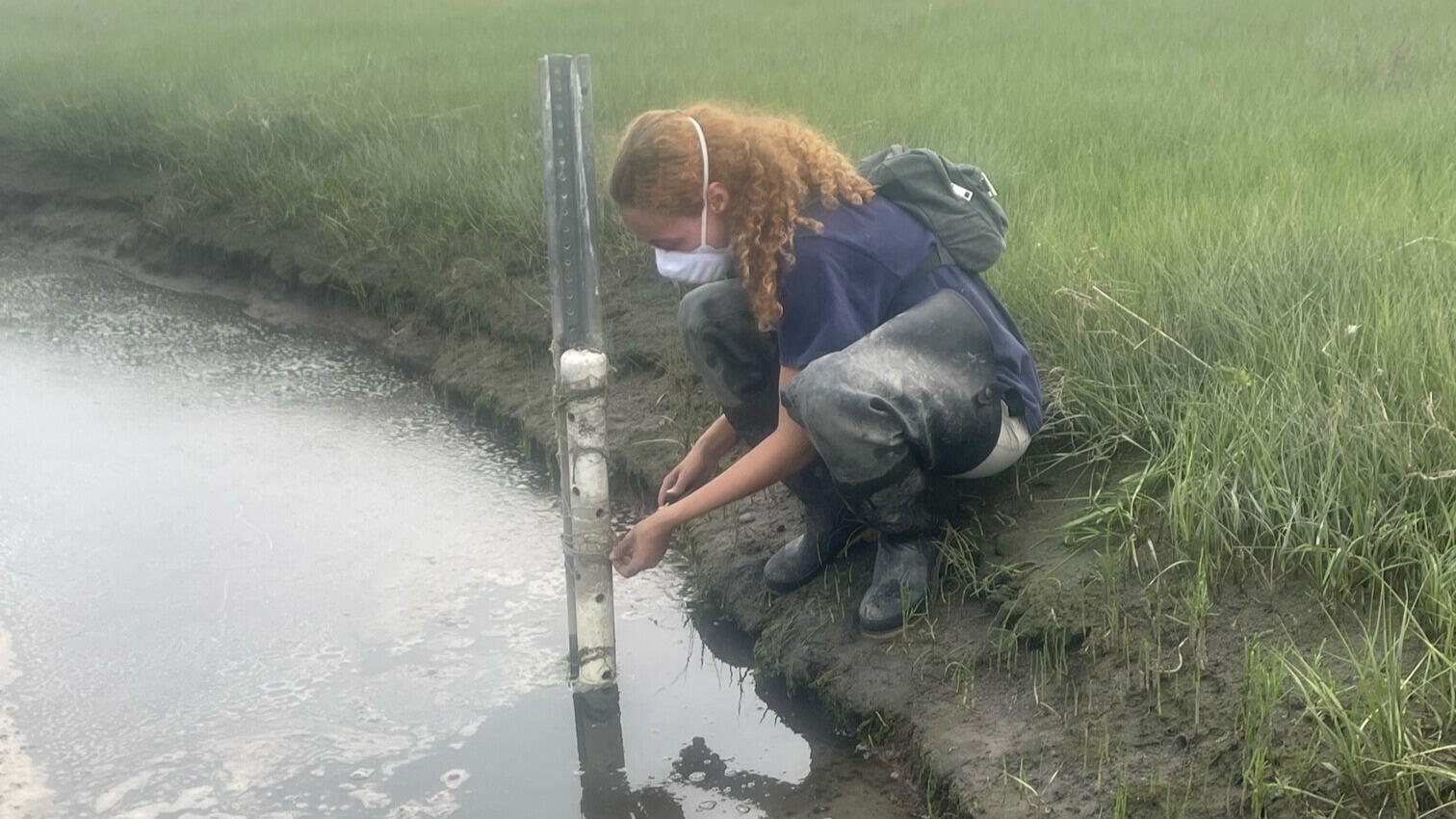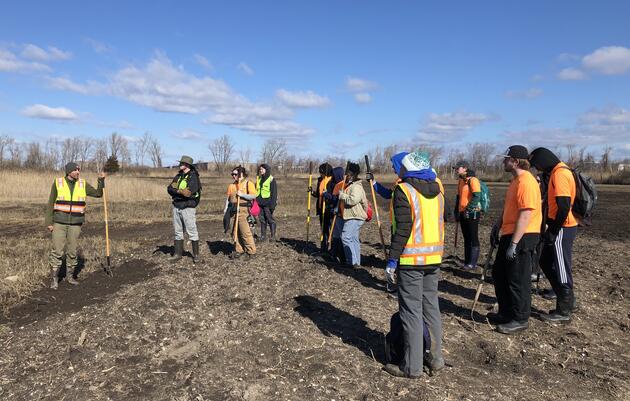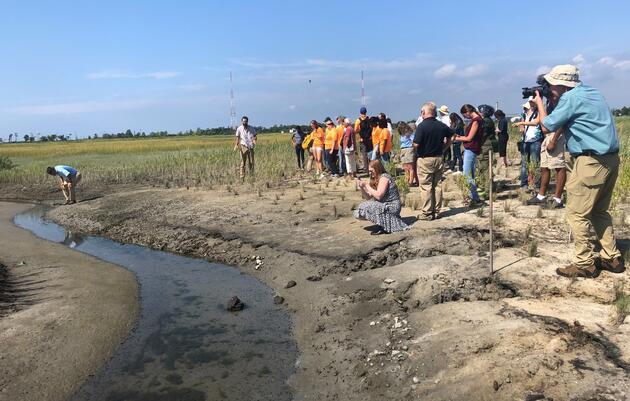Over 12,000 new plugs have gone into the ground this year, either in areas that weren’t already planted or where there is a good amount of bare ground. This adds up to a total of 177,000 native shrubs and plants. We are also working with the Native Plant Trust on the propagation and transplanting of endangered Marsh Pink flowers.
This year’s crew of Saltmarsh Stewards (paid students from Bunnell and Stratford High Schools) have been critical to the planting effort, as have local volunteers! Many thanks go out to our helpers from the Beardsley Zoo, Amazon, Sound School, Avalon Preserve, Maritime Aquarium, and The Nature Conservancy.
Meanwhile, the restored area has become a hub for scientific research.
In spring, the Saltmarsh Stewards received training from the Maritime Aquarium on how to identify plants and conduct vegetation surveys. The data they collect together will help project partners understand if the newly planted vegetation is surviving, and its abundance within the project.

Maritime Aquarium staff have also installed 12 small green houses on top of Spartina alterniflora areas, as part of a study looking at the impacts of warming trends on saltmarsh grasses. The study’s goal is to determine whether these marsh-building plants will grow differently with rising temperatures, how that will impact the health of the marsh, and as a result, what restoration techniques can best keep the marsh resilient.
This project is a collaboration between scientists at The Maritime Aquarium at Norwalk, Harbor Watch, Sacred Heart University, and Northeastern University.
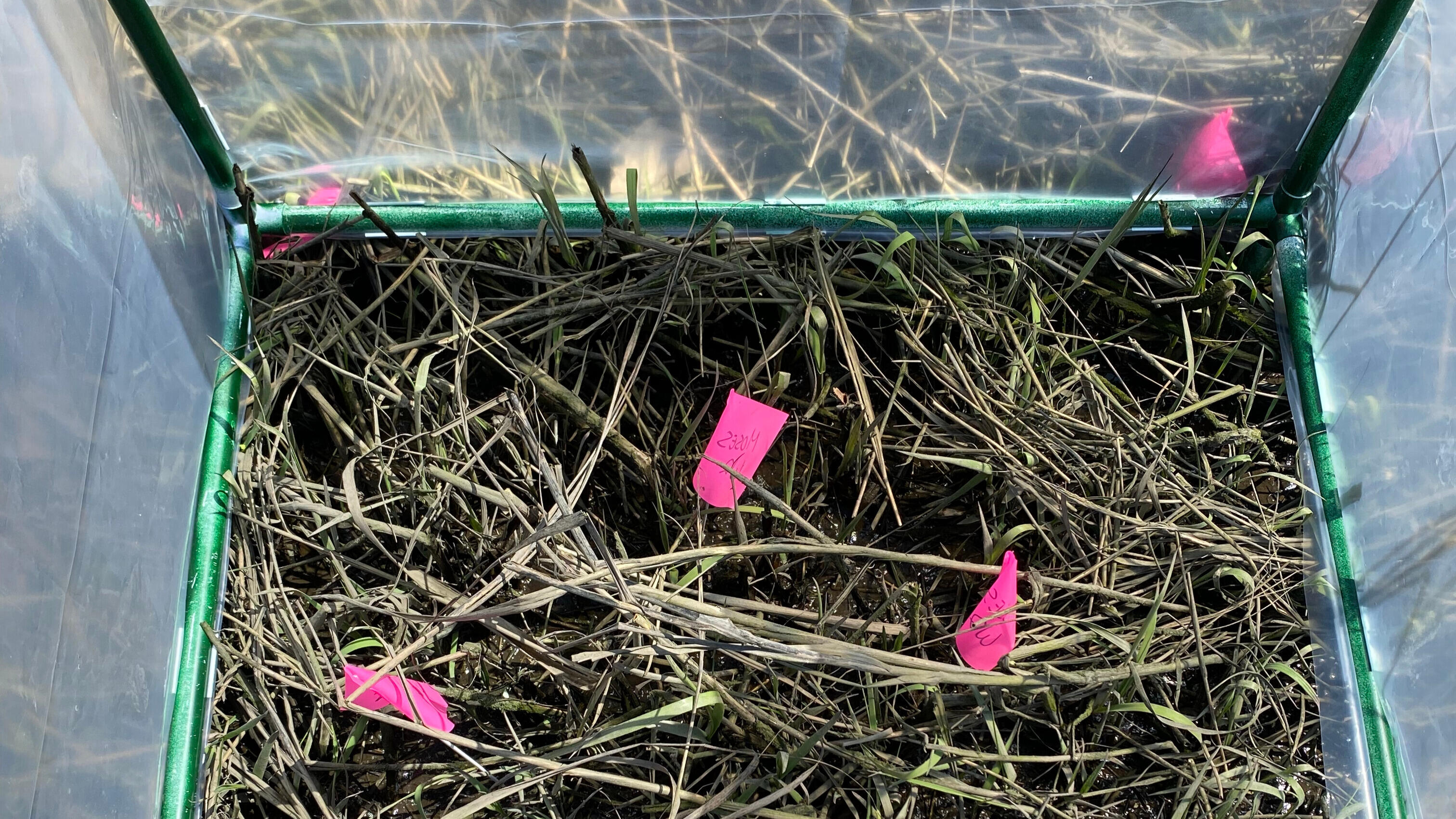
Students from UConn are surveying the newly-planted hummocks to find Saltmarsh Sparrow nests, and completing vegetation transects (measuring and counting vegetation) to monitor nesting success. We hope they will be able to band some of the birds and later in the season, deploy radio transmitters to track their movements and use of the marsh.
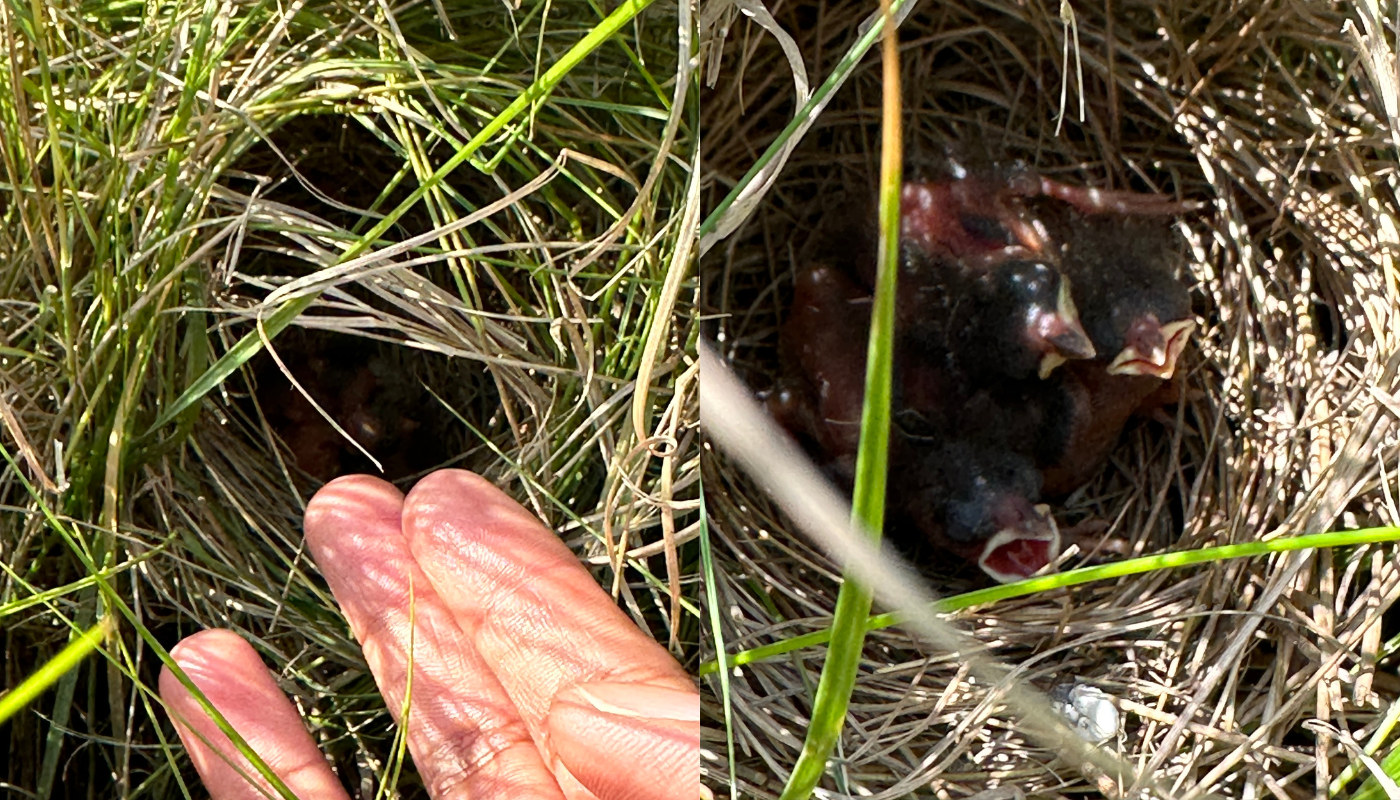
Hejia Zhang, Master of Environmental Science candidate at the Yale School of the Environment, is researching how carbon sequestration rates and carbon sources have changed in local wetlands with and without flow restrictions like upstream dams. Hejia collects meter-long sendiment cores, and analyzes the carbon and corresponding age using radiocarbon dating at different depths. Fom this, she can deduce carbon sequestration rates during different time periods and explore their connections with anthropogenic (human impact) events. So far, Hejia has collected sediment cores from the Great Meadows Marsh, East River Marsh, Charles E. Wheeler Wildlife Management Area, and Hammock River Marsh.
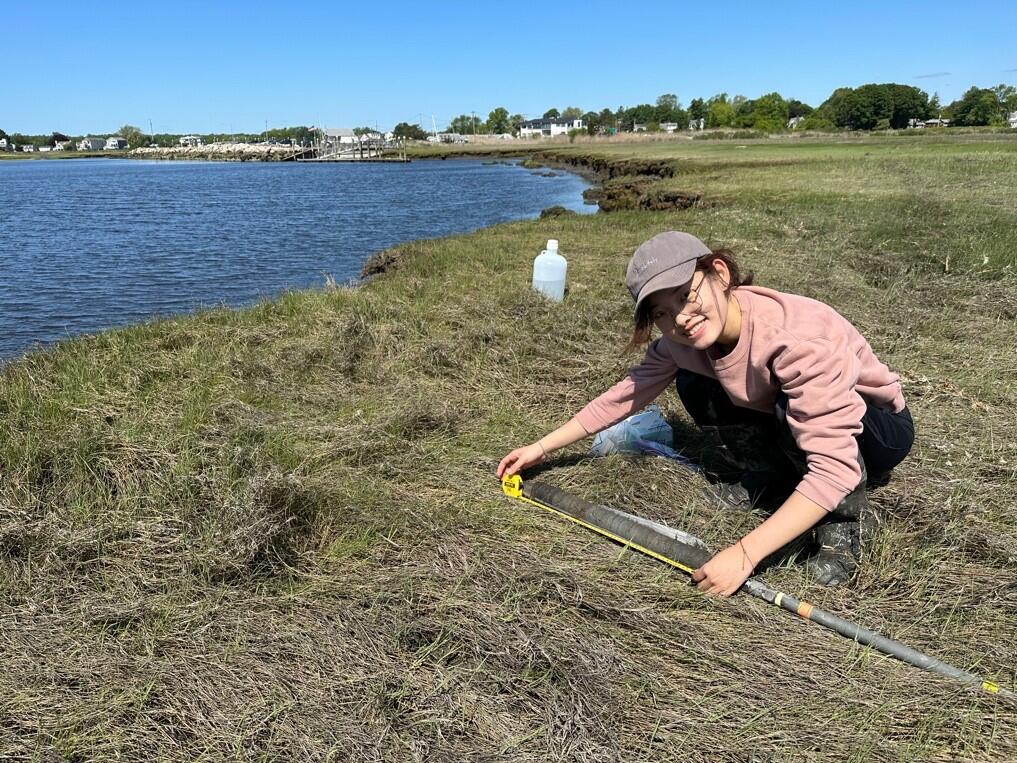
Finally, US Fish and Wildlife Service Southern New England Coastal Program installed five water level loggers on site in late April. They have just been pulled out of the ground, and we expect to see data soon which will tell us how tidal flow is moving in and out of the newly constructed channel. This data will help guide future adaptive management decisions.
